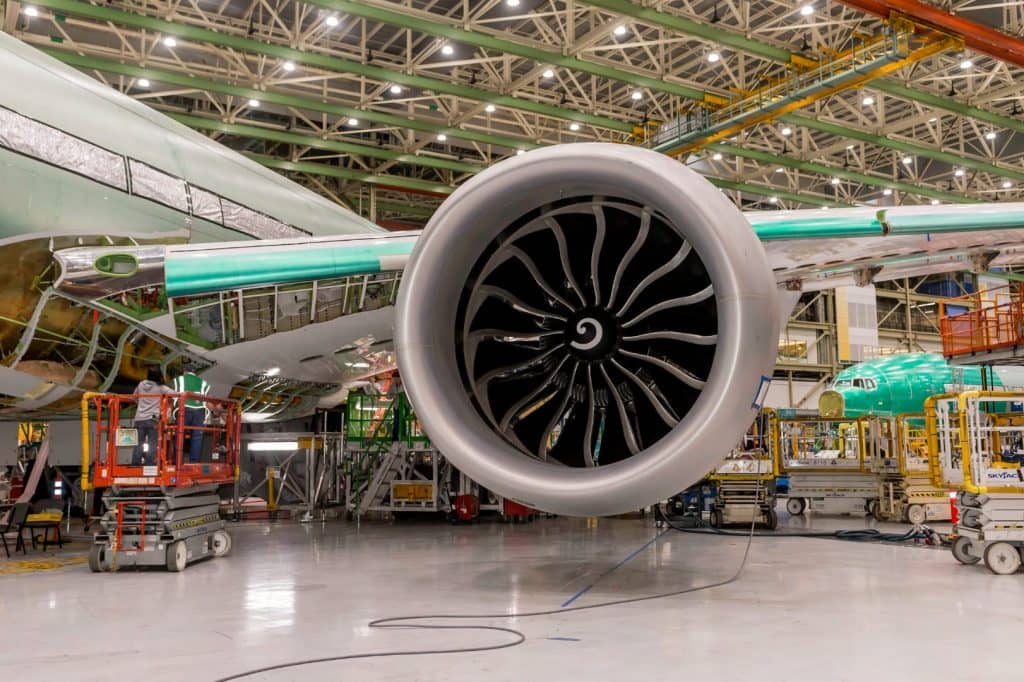Welcome to yet another amazing feat that has been pulled off by Boeing. This time, Boeing has put together the world’s largest fanjet engine with the world’s biggest twin-engine aircraft, the 777X. Boeing has released pictures that showcase the prototype 777X – still incomplete though – in Boeing’s Renton, Washington assembly hangar. A General Electric GE9X engine has been affixed to the port wing, and the aircraft is being prepared for its maiden flight scheduled for later in 2019.
The construction of prototype 777X has been going on since 2017. Boeing has two variants of the long-range and wide-body airliner planned. The prototype 777X is being termed as the biggest and the most efficient twin-engine jet in the world. It relies on the engineering and interior innovations from Boeing 777 and 787 Dreamliner. It is being said that it will be capable of handling routes such as the intercontinental rout of New York to Singapore.
The price for the variants starts at 350 million USD. It is being also said that the 777-8 and 777-9 variants will be capable of flying up to a range of 8,700 nautical miles (16,110 KM) while carrying passengers anywhere between 350-422. This has been made possible by making use of a composite spar that was made of over 400 miles of carbon tape. This carbon tape was cured in an autoclave – specially built – thus allowing the 777X to feature a wingspan of 72 meters.
In order to make use of this mighty wing, the 777X will rely on power from two GE9X turbofan jet engines. GE Aviation was able to bring down the number of fan blades to 16 and thus lower the weight of the engine while enhancing its power and size. It was able to achieve this by incorporating a new scale of 3D printing in the fan case and blades.
The GE9X measures in at 3.41 m in diameter thus rendering it wider than a Boeing 737’s fuselage. Despite the size, it can provide with 100,000 pounds of thrust and also offers a 10% better efficiency as compared to the GE 90 engines. The extensive use of ceramics also enable the engine to operate even at temperatures of 1,316? C.

